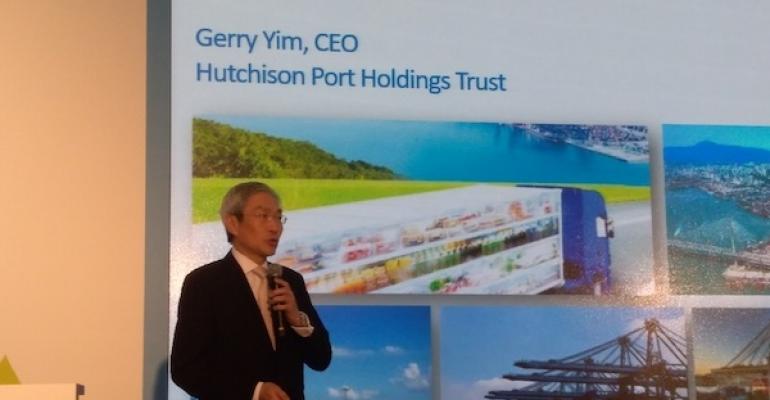Speaking at the 4th Cool Logistics Asia in Hong Kong, top executives from the container industry highlighted the various new technologies that are now available to help them do their jobs better and talked about how this is set to change even further going forward while pointing out that better returns are needed to make the investments for this to happen.
“Reefer is our major growth area,” declared Gerry Yim, md of Hutchison Port Holdings Trust flagship terminal Hong Kong International Terminals (HIT), which in 2017 handled some 600,000 teu of reefer containers and has 9,000 reefer plugs at its terminals in the city and at its mega boxship-focussed terminal in Yantian.
Hong Kong's strategic position
Taking advantage of Hong Kong’s free port status and strategic location at the heart of Asia, Yim billed the city as the global fruit express gateway to China and cited industry figures suggesting an annual global growth rate of 7% the reefer market, driven by higher fruit production and consumption in China and intra-Asia as well as the forecast that China will overtake the US as the world’s top fresh fruit importer by 2025.
However the market has special needs over and above of the normal logistics needs of normal containers, Yim pointed out, and this is where greater digitisation can be beneficial. Striving to be an “integrator of supply chains”, and not just a port, he said Hutchison was “working with suppliers and lines to streamline our procedures and process so that everybody hopefully makes more money and cuts more costs”.’
Yim noted that in line with investments made by the lines, Hutchison has also taken steps to boost reliability of the system. HIT is taking a proactive approach in digitalising the process and accelerating information flow, he said.
Electronic release orders
This includes digitalization initiatives such as remote reefer monitoring, electronic release orders (eRO) and track and trace solutions, which help to bring efficiency and visibility to the supply chain. At the moment about 20% of reefer volume at HIT goes through its priority lane where a combination of electronic systems and special arrangements ensures that these high value products get out to market quickly.
Join the Smart Shipping debate at Seatrade Maritime Middle East
“While liners are our main customers, HIT is keen to extend the reach to stakeholders along the supply chain and co-create a logistics ecosystem,” Yim said.
 In line with the theme of digitisation ONE ceo Jeremy Nixon cited five new technologies that can be applied to the reefer container trade. These include data analytics and artificial intelligence (AI), robotics and process automation, the Internet of Things (IoT) including real-time monitoring, the use of drones and the use of blockchains and cryptocurrency in the supply chain.
In line with the theme of digitisation ONE ceo Jeremy Nixon cited five new technologies that can be applied to the reefer container trade. These include data analytics and artificial intelligence (AI), robotics and process automation, the Internet of Things (IoT) including real-time monitoring, the use of drones and the use of blockchains and cryptocurrency in the supply chain.
Electronic digital interfaces
Starting with the easiest to achieve or lowest hanging fruit, Nixon said ONE as well as most of the other carriers are embarking on a programme of “EDI-max” where EDIs or electronic digital interfaces are used for everything possible to provide a server to server interface. He noted that ONE does about 80,000 EDI message sets a day now and this is set to increase.
A little higher up the tree would be the use of IoT not just on vessels but also on containers as well, including the use of telematics that will give the ability to not only track the box’s location but also to see how it is performing along the way and the state of its valuable contents.
Read more: ONE ceo Nixon sees reefer rates rising by second half of 2019
“Already we see now a strong move by Maersk Line to the telematics area, and there’s a number of pilot schemes going on with some of the other carriers and I think we’re going to see that telematics will become a really significant part of the supply chain,” Nixon said.
Finally the use of data analytics and ultimately AI and machine learning will be at the higher end of the range in making use of digital technologies to improve the overall supply chain particularly for higher value good such as those transported in reefer containers, he concluded.
Copyright © 2024. All rights reserved. Seatrade, a trading name of Informa Markets (UK) Limited.
Add Seatrade Maritime News to your Google News feed.  |

